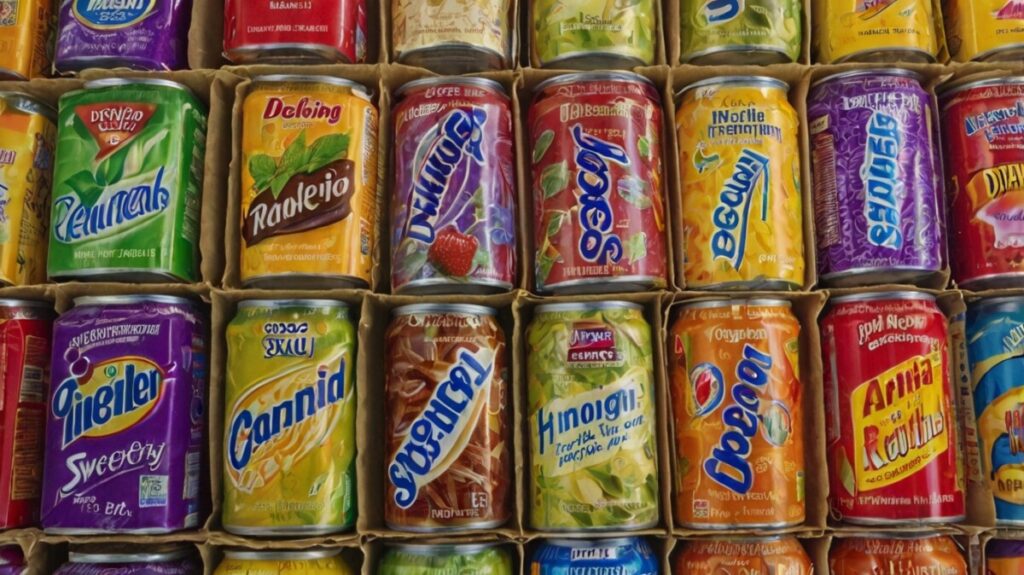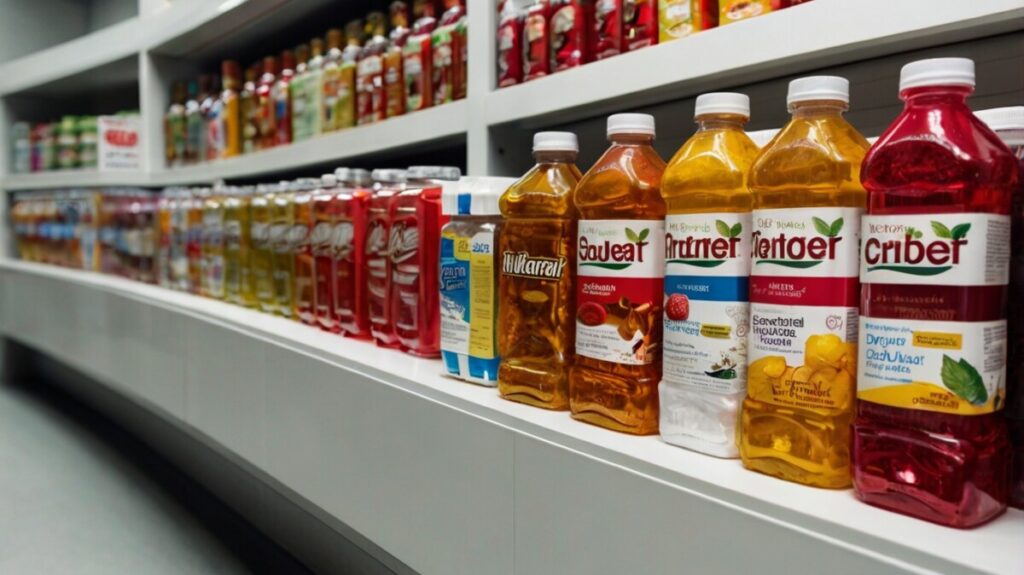Impact of Artificial Sweeteners

The rise in artificial sweeteners in food and drinks has sparked growing concerns about their environmental impact. As these zero-calorie additives become more common, understanding how they enter aquatic ecosystems, affect aquatic life, and influence drinking water quality is crucial. This article explores the pathways of contamination, the impact on ecosystems, and strategies to mitigate these environmental challenges.
How Artificial Sweeteners Contaminate Aquatic Ecosystems
Pathways of Contamination
Artificial sweeteners like sucralose and acesulfame enter aquatic ecosystems through various pathways. A significant route is through wastewater treatment plants, where these substances often accumulate due to their widespread use in food products. Since the human body cannot fully break down some sweeteners, they are excreted unchanged, leading to their presence in sewage systems. During wastewater treatment, these contaminants may not be entirely removed, allowing them to be released into freshwater bodies. Additionally, runoff from agricultural fields and urban areas further introduces artificial sweeteners into local water environments.
https://www.checkout-ds24.com/redir/620947/Akeem777/
Challenges in Wastewater Treatment
The effectiveness of wastewater treatment processes is crucial in determining the levels of artificial sweeteners in freshwater ecosystems. Traditional treatment methods, while efficient at removing many pollutants, often struggle to degrade specific artificial sweeteners. Research has shown that some sweeteners persist even after treatment, leading to their accumulation in freshwater systems. This persistence highlights the limitations of current wastewater treatment technologies in addressing these environmental contaminants.
Human Consumption and Environmental Impact
The consumption of artificial sweeteners plays a significant role in environmental pollution. As more consumers choose products containing these additives, their presence in municipal waste and subsequent wastewater increases. The continuous introduction of these sweeteners into the environment underscores the responsibility of consumers to be aware of their choices, as their use directly correlates with environmental impact.
Environmental Impacts of Artificial Sweeteners on Aquatic Life
Effects on Aquatic Ecosystems
Artificial sweeteners in aquatic environments can have serious consequences for aquatic life and ecosystems. Research shows that these substances can disrupt the balance of freshwater ecosystems, affecting both plants and animals. For example, certain sweeteners have been found to inhibit the growth of algae, which play a crucial role in the food web and overall health of aquatic ecosystems. Disrupting the growth of these organisms can lead to cascading effects throughout the ecosystem, ultimately threatening biodiversity and ecological stability.
Photodegradation Resistance and Toxicity
Artificial sweeteners are resistant to photodegradation, the process by which sunlight breaks down organic contaminants. This resistance means that sweeteners can accumulate in water bodies, leading to increased toxicity levels that can harm aquatic organisms. The environmental impact is further exacerbated when these sweeteners interact with other contaminants, potentially amplifying their toxic effects. Although the long-term consequences of these interactions are still being studied, the implications for aquatic life are concerning.
https://healthmania.zetib.com#aff=Akeem777
Comparing Environmental Behavior of Sweeteners

Not all artificial sweeteners behave the same way in the environment. Comparing sweeteners like aspartame, saccharin, and sucralose reveals differences in their persistence and toxicity in aquatic ecosystems. Some sweeteners degrade more readily or are less toxic to aquatic organisms than others. Understanding these differences is crucial for assessing the environmental impact of each sweetener, informing both regulatory measures and consumer choices.
Impact of Artificial Sweeteners on Drinking Water Quality
Presence in Water Supplies
The detection of artificial sweeteners like sucralose and acesulfame in drinking water supplies raises significant concerns about water quality and safety. Studies have found these sweeteners in both groundwater and surface water, often at levels exceeding acceptable limits. Their presence not only signals pollution but also suggests that current treatment processes may be inadequate for removing such contaminants from drinking water sources.
Health Implications of Contaminated Drinking Water
The health effects of consuming drinking water contaminated with artificial sweeteners are not yet fully understood. While regulatory agencies have set standards for acceptable levels of certain contaminants, the long-term impact of prolonged exposure to low levels of artificial sweeteners in drinking water remains uncertain. Continuous monitoring and further research are essential to ensure that drinking water quality is not compromised by these additives.
Regulatory Standards and Compliance
https://www.checkout-ds24.com/redir/630881/Akeem777/
Regulatory standards for artificial sweeteners in drinking water are vital for protecting public health. Several countries have established guidelines to limit the concentration of these substances in water supplies. However, as understanding of their environmental impact evolves, stricter regulations may be needed. Ensuring compliance with these standards is crucial to mitigating the risks associated with contaminated drinking water.
Long-Term Effects of Artificial Sweeteners on Aquatic Life
Studies on Algae and Freshwater Organisms
Long-term studies on algae and other freshwater organisms have provided valuable insights into the impact of artificial sweeteners on aquatic life. Research from institutions like the University of Florida shows that exposure to certain sweeteners can lead to altered growth patterns and reproductive issues in aquatic organisms. These findings highlight the importance of understanding the ecological effects of artificial sweeteners to preserve aquatic ecosystems.
Monitoring Sweetener Concentration Levels
Tracking the concentration levels of artificial sweeteners in aquatic environments is critical for assessing their impact on ecosystems. Elevated levels of these contaminants can lead to significant ecological changes, which may not be immediately apparent. As sweeteners accumulate in water bodies, their long-term effects on biodiversity and ecosystem functionality could have serious consequences, underscoring the need for ongoing environmental assessments.
Potential for Bioaccumulation
A significant concern with artificial sweeteners is their potential for bioaccumulation in aquatic species. As these organisms consume sweeteners, they may accumulate in their tissues, leading to higher concentrations within the food chain. This bioaccumulation poses risks not only to aquatic organisms but also to predators, including humans, who rely on these species for food. Understanding the dynamics of bioaccumulation is vital for assessing the broader implications of artificial sweeteners on aquatic ecosystems.
Mitigating the Environmental Impact of Artificial Sweeteners
Reducing Sweetener Use
To lessen the environmental impact of artificial sweeteners, it is crucial to adopt strategies aimed at reducing their use. Encouraging consumers to choose natural alternatives or limit their reliance on sweeteners can significantly decrease the levels of these substances in wastewater. Public campaigns promoting awareness of the environmental consequences of artificial sweeteners can empower individuals to make informed choices, ultimately leading to reduced consumption.
Enhancing Wastewater Treatment Technologies
Improving wastewater treatment processes is another key strategy for mitigating the environmental impact of artificial sweeteners. Investing in advanced treatment technologies that effectively break down these contaminants can help reduce their release into aquatic ecosystems. Research and development of innovative treatment methods should be prioritized to address the shortcomings of existing systems and ensure that artificial sweeteners are adequately removed from wastewater before it is discharged.
Public Awareness and Education
Public awareness and education are vital in addressing the environmental impact of artificial sweeteners. By informing consumers about the potential risks and environmental consequences associated with these additives, individuals can be encouraged to make more sustainable choices. Educational initiatives focusing on the ecological implications of artificial sweeteners can foster a greater sense of responsibility among consumers, contributing to the reduction of these environmental contaminants. By understanding the pathways through which artificial sweeteners enter aquatic ecosystems, recognizing their effects on aquatic life and drinking water quality, and implementing strategies to mitigate their impact, we can better protect our environment from these pervasive pollutants.
https://www.checkout-ds24.com/redir/630880/Akeem777/
Conclusion
Artificial sweeteners have significantly influenced our dietary habits and health outcomes. While they offer a low-calorie alternative to sugar, helping in weight management and providing options for individuals with diabetes, their long-term effects remain a subject of ongoing research and debate. Some studies suggest potential health risks, including metabolic changes and gut microbiome alterations, raising concerns about their widespread use. As with many dietary choices, moderation and informed decisions are key. Understanding both the benefits and potential risks of artificial sweeteners can help individuals make healthier choices that align with their personal health goals.
https://serenity7wellness.com/index.php/2024/05/29/best-workout-routines-for-beginners/
https://www.ncbi.nlm.nih.gov/
FAQs
Q: What are the environmental impacts of artificial sweeteners on soil and water?
A: Artificial sweeteners are a class of environmental contaminants due to their persistence in the environment. They can be found in many water sources, including drinking water and aquatic environments, where they may affect the health of algae and water fleas.
Q: How do artificial sweeteners enter our water treatment systems?
A: Artificial sweeteners often make their way into water treatment systems through waste water from households and industries. Since these compounds are so stable, they escape degradation during the water treatment process and can be found in drinking water.
Q: Are there any new studies on the effects of artificial sweeteners in brackish water?
A: Yes, new studies are investigating the presence and effects of artificial sweeteners in brackish water. Researchers are focusing on the emerging environmental contaminants and how they interact with local ecosystems.
Q: Why are some artificial sweeteners like sucralose so stable in the environment?
A: Sucralose is a compound that is remarkably stable, which means it does not break down easily. This stability allows it to persist in soil and water, leading to potential long-term environmental impacts.
Q: What is the role of EFSA in assessing the environmental impact of artificial sweeteners?
A: The European Food Safety Authority (EFSA) is implementing part of the preparatory work to evaluate the environmental impact of artificial sweeteners. This includes studying their presence as emerging environmental contaminants and their effects on ecosystems.





